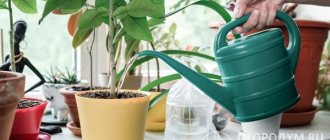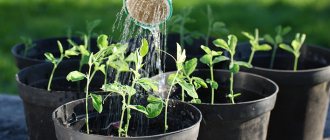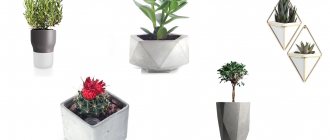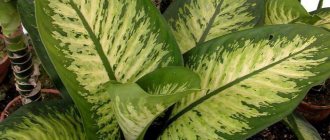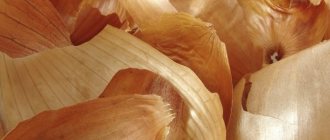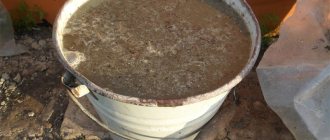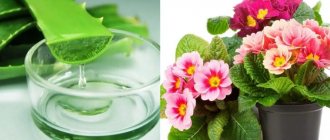Mineral fertilizers for indoor plants and flowers:
Mineral fertilizers can be nitrogen, potassium, phosphate or complex. Nitrogen, potassium and phosphorus are the main nutrients for plants.
Depending on the needs of a particular species and stage of development, the ratio and availability of these substances varies.
- Nitrogen fertilizers for indoor plants are mainly used during the active growing season (spring-summer) for maximum growth and development of shoots and leaves. They are mainly used for feeding decorative deciduous species.
- Potassium fertilizers, like nitrogen fertilizers, promote the growth of indoor plants, and together with phosphate fertilizers ensure abundant flowering. Fertilizers with a high content of potassium and phosphorus are used to feed decorative flowering species.
- Complex mineral fertilizers for house flowers are universal and applicable for most species.
Mineral fertilizers for indoor plants are produced mainly in liquid and dry (granules, powder) forms, and also come in tablets, capsules and sticks.
Methods for indicating the mineral content of a liquid solution
- % pure substance i.e. N/P/K – world system
- System of oxides of elements in % i.e. N/P2O5/K2O – CIS and Russia 3) grams per liter of element.
When preparing recipes, it is necessary to take into account that simple and double superphosphates are poorly soluble, and nitrogen fertilizers are divided into amide, ammonium and nitrate based on the quality of nitrogen.
Plants are able to assimilate only the ammonium form and all other species are converted to it through biochemical reactions.
.
Popular mineral fertilizers for plants
.
Advice
The amount of nitrogen-phosphorus-potassium (NPK) allows you to determine what types of plants the fertilizer is intended for.
For example, 15-5-5 is a lot of nitrogen, which means for decorative deciduous plants, 8-10-14 is a lot of phosphorus and potassium, which means for flowering plants, and 7-7-5 is a universal fertilizer.
Application
The peel is cut finely, poured in and left for 2 days, drained, after which everything is ready. But the solution cannot be stored for a long time. Dried banana peel powder is sprinkled little by little under the roots of the plants. This effectively repels pests. You can also dry it and add it in combination with tangerine, onion, and orange skins. They also produce positive changes in development.
In fact, there are much more fertilizers for home flora. The main thing is to apply them and observe changes in growth. And also give your love and sincere care. And your pets will certainly thank you with lush flowering and positive energy.
Liquid fertilizers for indoor plants and flowers
Liquid fertilizers for indoor flowers and plants are a salt concentrate. To feed the plant, liquid fertilizer is diluted with water in a certain proportion, which is indicated in the instructions, and then watered.
- Efficiency . The root system of plants better absorbs nutrients in a liquid state.
- Convenience. It is easy to feed indoor flowers with fertilizer.
- Balanced composition. Liquid complex fertilizers for indoor plants take into account the individual needs of a particular species. For example, special complexes for succulents, orchids or palm trees.
- Possibility of foliar feeding through the stem and leaves. This feeding allows you not to oversaturate the plant with nutrients, but by spraying the leaves to make them brighter and thicker. Thus, the leaves will absorb the required amount of substances, and the plant will not be in danger of an excess of them. It must be remembered that the effectiveness of foliar feeding is maximum for young (1st year) indoor plants. In addition, plants with pubescent or glossy leaves practically do not absorb substances. These include: succulents, palm trees, Saintpaulia and other plants. IMPORTANT! Foliar feeding cannot replace root feeding and is an addition to it during the period of active growth and development of plants.
- Price. Liquid fertilizer for indoor plants is more expensive than granular fertilizer. Therefore, if you have a few plants and flowers, then this is the best option.
Liquid fertilizers for indoor flowers from Agricola
According to most experts, liquid mineral fertilizers are the best option for feeding indoor plants and flowers.
Combination recipes
It has long been noted that food waste is used for the successful development of home flora. Waste in the form of onion, orange, tangerine and banana peels is beneficial, because they contain a lot of useful components.
Banana fertilizer for indoor flowers is popular among people, because it has a number of advantages and incredible benefits. This is not just enriching the soil and stimulating plant development; it also helps in pest control.
Decoctions, tinctures, and dried banana waste are easy and cheap to prepare, but there is a solution to problems with feeding.
Before use, the peel should be fried or frozen in the refrigerator for disinfection to destroy the layer of chemicals that are used on it. Be sure to wash bananas with hot water before eating. This also helps remove harmful components located on top.
Dry mineral fertilizers
Dry fertilizer is a mixture of minerals in the form of granules or crystals. To feed, the dry mixture is diluted in water in strict accordance with the instructions so that there is no sediment at the bottom and the solution is completely homogeneous.
A small package of mineral fertilizer is usually diluted in 10-15 liters of water, so this is the best option for a large home garden.
Sticks for indoor plants
Tablets, sticks or capsules are long-acting fertilizers, i.e. minerals enter the plant gradually. One stick provides the plant with an average of three months (sometimes from 2 to 6).
The fertilizer usually contains nitrogen, potassium, magnesium, phosphorus, which is complemented by boron, manganese, iron, copper, molybdenum or zinc.
Recently, sticks against pests of indoor plants , which, in addition to feeding, help in the fight against insects (insecticide). Fertilizer sticks for pests contain the substance imidacloprid.
Application
Depending on the diameter of the container, calculate the number of sticks per indoor plant. It turns out something like this: 1 stick – up to 10 cm, 2 – 11-15 cm, 3 – 16-20 cm, 4 – 21-25 cm. The sticks are inserted into the substrate to a depth of 4-5 cm from the edge of the container at a distance of 1 -3 cm, and then the plant is watered.
.
The principle of operation of fertilizer sticks in a potted plant
.
Reviews
Opinions on the effectiveness of sticks for indoor plants among gardeners vary significantly. Experienced gardeners believe that using fertilizers in the form of sticks does more harm than good.
Near the sticks in the substrate there is an increased concentration of elements and insecticide, which negatively affects the root system.
Therefore, it is better to use fertilizer (for example, liquid with humic acids) and insecticide separately.
Advice
Objectively, we can say that when using nutrient sticks, it is better to break them into small pieces (crush), this way you will ensure a more uniform absorption of minerals by the plant.
PRICE. Depending on the manufacturer, in terms of one piece from 2 euro cents to 5.
How to prepare mineral fertilizer yourself?
- Nitrogen fertilizer: ammonium sulfate, ammonium nitrate or urea - 1 g per 1 liter of water.
- Potassium fertilizer: potassium sulfate, potassium salt or potassium chloride - 1.5 g per 1 liter of water.
- Phosphate fertilizer: dry superphosphate – 6 grams per 1 liter of water or 1 part per 30 parts of soil.
Harm or benefit
Many gardeners are confident that nitrogen fertilizing is extremely harmful. In their opinion, they accumulate in fruits in the form of nitrates, which everyone is afraid of. Experts partly agree with this opinion, but with the caveat that nitrates accumulate in fruits only when fertilizers are applied incorrectly to the soil.
In other words, if you overfeed your plants with nitrogen, the excess fertilizer may actually end up in the fruits and tubers. Plants that do not need large amounts of nitrogen tend to accumulate nitrates. Among such crops are early potatoes, beets, and leafy vegetables. In order to prevent fruit poisoning, it is important to strictly adhere to the dosage when feeding them.
Organic fertilizers for indoor plants
Organic fertilizers include: manure, litter, compost, humus - excellent suppliers of nitrogen, and wood ash - an excellent source of potassium and calcium.
There is a lot of debate among specialists and experienced gardeners regarding the advisability of feeding indoor plants with organic fertilizers.
We can say for sure that organic fertilizers make the soil mixture more moisture- and breathable, especially the periodic application of humus, and stimulate the active growth of green mass.
Wood ash, according to leading experts, is the most perfect organic fertilizer for indoor plants.
We talked about it in detail in the additional material to this article about home fertilizers.
Peculiarities
Organic or natural fertilizers for indoor plants have their own specifics. Organic fertilizers are not suitable for bulbous and corm species, and variegated decorative-deciduous plants can become ordinary green if improperly fertilized.
Preparation
Before feeding plants, organic matter must be sterilized. Sterilization is carried out only with the help of fire, and after that it is kept for 20-25 days to restore the biological environment.
- Therefore, experts advise buying organic supplements in ready-made form.
Application
Flower growers recommend using mullein infusion (one tablespoon per one liter of water) or bird droppings (one teaspoon per one liter of water).
This fertilizer is recommended for use for large and fast-growing plants, and it has a particularly beneficial effect on asparagus, vines, indoor roses, palm trees, pelargonium and primrose.
| A unique complex fertilizer increases the yield up to 10 times! |
Vermicompost for indoor plants
Many experienced gardeners believe that it is better to use organic fertilizers for indoor plants (except ash) based on vermicompost (Vermistim, Humisol).
In the composition of such fertilizers, pay attention to the % of humic substances (salts or acids).
Application of vermicompost
We offer ways to use vermicompost for indoor plants and seedlings, namely the substance itself, and not a liquid concentrate (extract).
- For nutrient substrate. Vermicompost, garden soil, sand – 1:4:1. This universal recipe is suitable for planting and replanting many types of indoor plants, but certain types require individual amendments.
- To accelerate root formation. 1 tsp. per 100 ml of water - place a cutting of a houseplant in this nutrient solution.
- For mulching and fertilizing. A layer of soil mixture (1-2 cm) is removed from above and vermicompost is poured in its place, and then watered with water. This bookmark lasts for about 2-3 months.
- For feeding. 5-6 tbsp. l. Vermicompost is dissolved in one liter of water and left for 24 hours. Then water the plants and flowers every 10-14 days. Before this, the solution must be stirred.
.
One of the options for organic fertilizer with vermicompost
.
Peculiarities
The pH of vermicompost is 6.5-7.5, almost neutral. Vermicompost may contain worker worms, but they do not damage the plant, and after they grow up they can be thrown outside. It is undesirable to sterilize vermicompost - its beneficial properties are lost. Real vermicompost does not mold.
Less popular natural supplements
There are several other remedies that will help refresh depleted indoor flowers. They are not so popular, but gardeners note their high efficiency:
- Water in which meat and fish were washed . If you water your favorite plants with water in which you washed meat or fish, the flowers will soon come to life, becoming bright, lush and juicy.
- The water in which the cereals were washed . Water after buckwheat, rice, millet or other cereals rich in silicon, iron, phosphorus and magnesium is suitable.
- Toothpaste . Feeding with toothpaste will help nourish the root system, making the entire plant stronger. To do this, you need to dissolve 1/3 of the tube in 1000 ml of water. To prepare a composition based on tooth powder, you need to take 3 tbsp. spoons of the product and the same amount of wood ash, one spoon of copper sulfate and dilute all components in 1000 ml of water.
Succulents do not need to be fertilized too often, however, in the spring, like other indoor plants, they also need it
Fertilizers for flowering indoor plants
Flowering indoor plants are fed with a special fertilizer, as certain minerals are needed for abundant flowering.
Fertilizer for flowering indoor plants allows you to achieve better and longer flowering, prevents buds from falling off and helps produce fruit.
Basic fertilizer for flowering, approximate composition: nitrogen (N) - 10 g/liter, phosphorus (P) 20 g/liter, potassium (K) 30 g per 10 liters of water + vitamins B1, B6 and PP.
Castor oil
Fertilizing with castor oil, according to some gardeners, is very effective for beautifully flowering plant species at the time of bud setting (budding) - 1 tsp. for 1 liter of water.
Liquid fertilizers for feeding flowering indoor plants
- For young plants. Potassium salt, ammonium nitrate, superphosphate - 15:10:15 g per 10 liters of water.
- Before budding for flowering. Potassium salt, ammonium nitrate, superphosphate - 15:20:25 g per 10 liters of water.
- After flowering. Potassium salt, ammonium nitrate, superphosphate - 10:20:25 g per 10 liters of water.
Recommendations
- Flowering indoor plants need to be fed as soon as the buds appear and continue until flowering ends.
- Carefully observe the dosage and frequency of fertilizing - an excess of minerals has a negative effect on the plant.
- An excess of nitrogen is especially undesirable, as it stimulates the growth of green mass and slows down flowering.
- Potassium and phosphorus are the key to successful flowering and fruiting. Some gardeners prefer to use “Ideal” fertilizer for flowering indoor plants with a high phosphorus content.
- Before flowering, phosphorus is the most essential substance for a plant; if it is deficient, growth and development are delayed, brownish-purple spots appear on the leaves, and they themselves curl.
.
Liquid fertilizers for indoor plants from Pokon: for flowering, decorative and deciduous species and universal.
.
Phosphorus deficiency
The main amount of the element is contained in the young and reproductive parts of plants, where the active synthesis of organic substances takes place. From aged leaves it moves to active areas of development.
That is why the first signs of deficiency appear on more mature leaf blades. They are covered with typical spots of red, bluish or purple color. With a severe lack of phosphorus, the leaves turn black and curl. Growth is inhibited and flower ripening is slowed down.
Young plants suffer most from a lack of this element and acquire characteristics that are irreversible.
The second important period for mandatory feeding with phosphorus is the time of formation of the plant’s reproductive organs .
Nitrogen
Nitrogen compounds used by the plant can be divided into the following groups:
- nitrates, or salts of nitric acid;
- ammonium salts;
- various organic nitrogen compounds (water-soluble amino acids, urea);
- nitrites, or salts of nitrous acid.
Nitrogen promotes the growth of stems and leaves. With enough nitrogen, the leaves acquire a dark green color and become juicy.
If it is lacking in the soil, plant development slows down, leaves become smaller, turn yellow, die, the shape and color of flowers change, and buds fall off. This phenomenon is called chlorosis.
But frequent application of nitrogen is also harmful: plants grow strongly and bloom poorly.
Excess phosphorus
Leads to accelerated development of the plant, yellowing of both individual parts and the entire flower. It loses leaves and acquires foci of necrosis (death).
In addition, an excess of phosphorus can provoke a deficiency of other essential elements - magnesium, copper, cobalt, iron, zinc.
That is, excess is just as dangerous for the plant as its deficiency. Therefore, you should follow the timing of fertilization and the correct dosage if you want to get a healthy and beautiful plant.
What are the best fertilizers for violet blooms?
How to fertilize orchids for abundant flowering, read the article.
What care rules are violated if the anthurium turns yellow? https://sad-doma.net/houseplants/decorative-leaf/aroidnye/anturium/uhod.html
